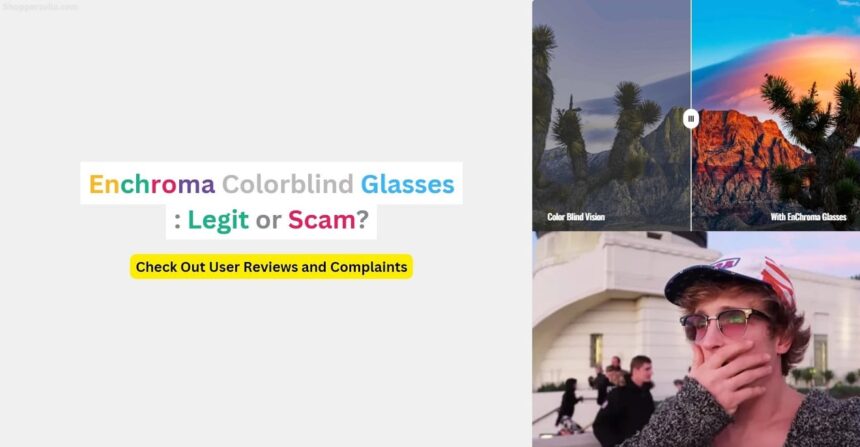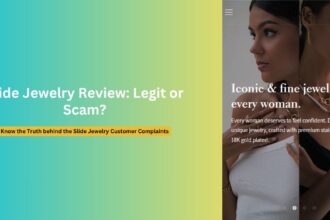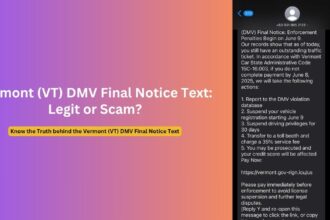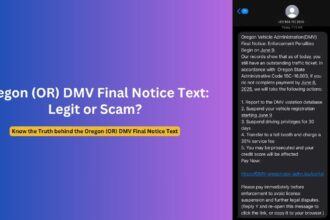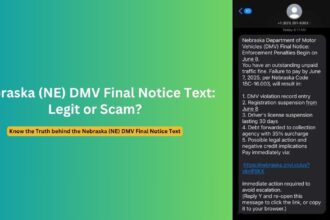Enchroma’s colorblindness glasses have taken the world by storm, with viral marketing videos showing emotional reactions from colorblind people seemingly seeing color for the first time. But conflicting user reviews and scientific studies have raised doubts about whether these glasses live up to the hype. This article will examine if Enchroma’s product is a revolutionary breakthrough or an exaggerated scam.
Inherited colorblindness, which affects 1 in 12 men and 1 in 200 women, has no cure. Enchroma claims their glasses work for certain types of red-green color deficiency to enhance color perception. But the science is disputed, and many unsatisfied customers feel misled by the marketing. We’ll analyze it’s claims versus scientific research and real-world results to uncover the truth.
Overview of the Enchroma Colorblind Glasses Controversy
Enchroma’s glasses use optical filters to block overlapping light wavelengths, supposedly enhancing the separation between reds and greens. The company claims this improves color discrimination for some forms of colorblindness. But some scientists argue the glasses simply shift color perception rather than correcting it.
Hundreds of viral videos show deeply emotional responses from colorblind people trying Enchroma’s glasses for the first time. But critics suggest the videos are manipulative marketing that don’t reflect real-world results. Independent testing and user reviews seem to support this skepticism.
So do En-chroma’s glasses represent a life changing breakthrough? Or are the company’s claims exaggerated and misleading? Let’s examine the evidence.
What is Enchroma’s Approach to Correcting Colorblindness?
Enchroma says their glasses work for certain types of hereditary red-green colorblindness, where the photoreceptor cones in the eye malfunction. This causes an overlap between red and green light wavelengths, making these colors hard to discriminate.
Their glasses use optical filters designed to block some of the overlapping wavelengths, enhancing the separation between reds and greens to improve color perception.
This approach can’t cure colorblindness as it doesn’t repair the underlying photoreceptor issue. But Enchroma claims it can significantly improve color discrimination – the ability to distinguish subtle color shades.
Do Enchroma’s Glasses Effectively Correct Colorblindness?
Whether Enchroma’s glasses achieve their intended purpose is hotly debated. The company claims they enhance color vision and discrimination, but many disagree. Here’s what the evidence shows:
- A 2018 study found the glasses don’t improve color recognition ability. Researchers tested the glasses on 48 colorblind people and found no improvement in color vision tests.
- Scientists say the glasses don’t allow users to see new colors. They simply shift color perception in some ways while impairing it in others.
- Many customer reviews say the glasses don’t work as advertised. Some report marginal improvements in certain situations, but most say the glasses don’t come close to normal color vision.
- The emotional reaction videos are called into question. Critics argue they are manipulated and don’t reflect real-world results, giving false expectations.
While Enchroma insists their glasses work, independent testing indicates they don’t effectively correct colorblindness. Most customers seem to agree the marketing sets unrealistic expectations.
Customers Reviews and Complaints Reveals the Truth
With conflicting claims about Enchroma’s glasses, customer reviews provide important insights into real-world experiences:
- Many reviewers say the glasses don’t work at all for them, only adding an undesirable tint.
- Some report minor improvements in certain situations, like differentiating grass and leaves. But the glasses don’t enable them to see new colors.
- Most agree the emotional reaction videos are exaggerated and manipulative marketing.
- A common theme is the glasses aren’t worth the high $300 – $500 cost given their limited effectiveness.
- Numerous complaints cite terrible customer service and difficulty getting refunds when the glasses don’t work as expected.
While a minority report some benefits, most reviews indicate underwhelming results, inconsistent with the marketing claims.
Is Enchroma Colorblindness Glasses a Scam or a Game-Changing Product?
Given the scientific evidence and customer feedback, does Enchroma deserve accusations of perpetrating a scam? Or are their glasses a true breakthrough? There are convincing arguments on both sides:
Revolutionary Breakthrough?
- The glasses do appear to provide minor benefits to certain users, mainly improving red/green differentiation.
- Some report appreciating previously indistinguishable details like red berries on bushes.
- For those with mild forms of colorblindness, the glasses may have legitimate, though limited, usefulness.
Scam and Exaggerated Marketing
- Both scientific studies and most customer reviews suggest Enchroma’s claims of effectively correcting colorblindness are vastly overstated.
- The emotional reaction videos propagate unrealistic expectations to sell overpriced products.
- Complaints of poor customer service and refusal to issue refunds point to shady business practices.
- Review manipulation, compromised science, and staged demonstrations reveal deceptive marketing.
While arguments exist on both sides, the weight of evidence indicates Enchroma engages in misleading marketing of products that don’t work as advertised for the majority of colorblind users.
How to Identify and Avoid the Colorblind Glasses Scam
Given the questionable marketing practices of colorblindness glasses companies like Enchroma, PileStone, and Carelust, how can consumers avoid getting scammed?
- Be wary of emotional reaction videos, which likely misrepresent real-world results. Rely more on independent user reviews.
- Note that true correction of hereditary colorblindness is not currently medically possible with glasses alone. Set expectations accordingly.
- Consider trying cheaper competing products to test if color filters are helpful before investing in expensive colorblind glasses.
- Research the company’s return policies and guarantees in case the product doesn’t work for you. Read refund experiences from other customers.
- Consult with a doctor to understand your specific level and type of colorblindness so you know what to realistically expect.
- View promises of glasses “curing” or “fixing” colorblindness as red flags for hype and exaggeration.
Stay skeptical of dramatic marketing claims and manage expectations realistically. Thoroughly research options before spending large sums on unproven technology.
Frequently Asked Questions About Enchroma Colorblind Glasses
1. Do Enchroma glasses work for colorblindness?
While they may provide minor benefits to some, scientific studies and most customer reviews indicate Enchroma glasses do not work as effectively as claimed to correct colorblindness.
2. What do people experience when trying Enchroma colorblind glasses?
Most users report very limited changes to perception. A few notice better differentiation between some problematic colors, but no one gains the ability to see brand new colors.
3. Are the viral reaction videos real or fake?
Experts agree the dramatic emotional reactions in Enchroma’s marketing videos vastly exaggerate any benefits experienced in real-world usage for most colorblind people.
4. Can colorblindness ever be cured?
No cure for hereditary colorblindness exists yet. But researchers have successfully used experimental gene therapy in animals, providing hope for a possible future cure.
5. What technology do Enchroma glasses use?
They use optical filters designed to block overlapping light wavelengths to enhance contrast between reds and greens. But this falls well short of fully correcting color vision.
The Bottom Line: Don’t Buy the Hype
Enchroma’s colorblindness glasses rely on misleading emotional marketing that promotes unrealistic expectations. While they may modestly enhance reds and greens for some users, both scientific studies and customer reviews indicate they fail to effectively correct color vision as dramatically advertised.
Set skepticism aside and you may become the next manipulated customer burned by hype. If trying colorblindness glasses, manage expectations, thoroughly research options, and buy from retailers with excellent return policies. Hopefully better solutions emerge, but for now, it’s promises should be taken with a grain of salt.
Remember these key scam points when considering Enchroma’s colorblind glasses:
- Independent testing shows they don’t correct colorblindness or enable seeing new colors.
- Most customer reviews cite minor benefits at best, inconsistent with the marketing.
- Emotional reaction videos propagate unrealistic expectations through deception.
- Many report issues getting refunds when the glasses don’t work as advertised.
- While potential benefits exist for some, exercise skepticism towards dramatic marketing claims.
